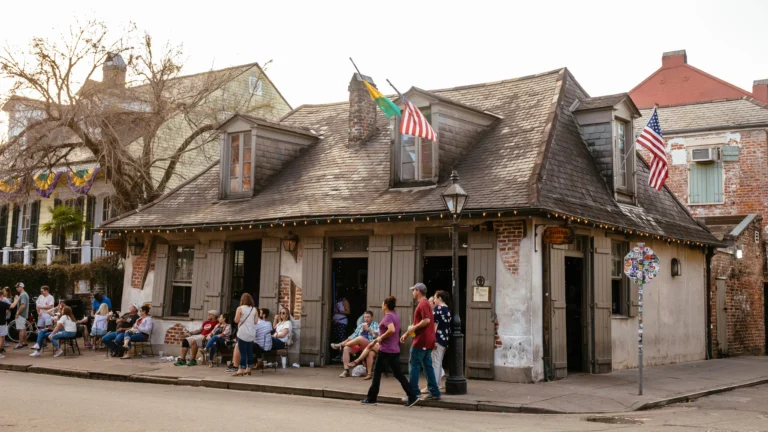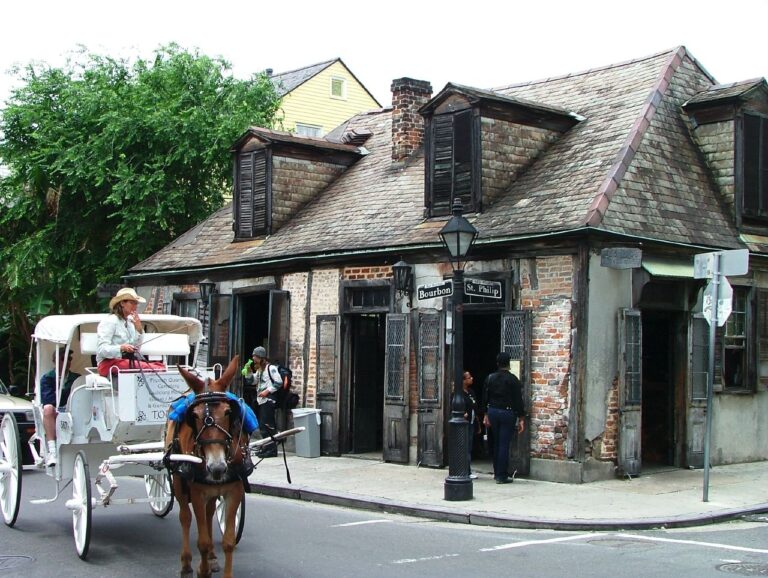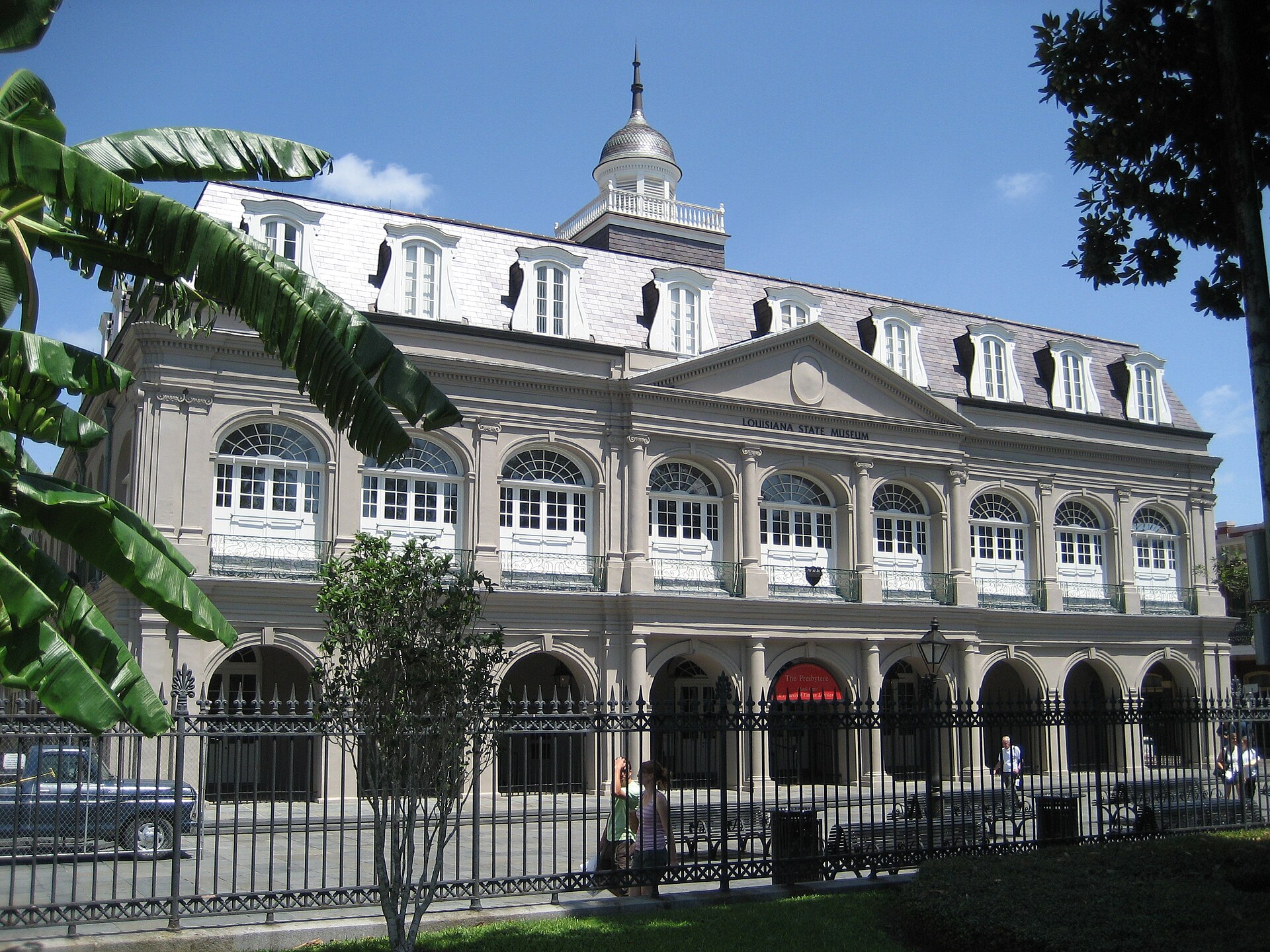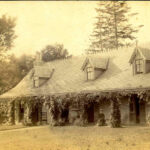Lafitte’s Blacksmith Shop, located at the junction of Bourbon Street and St. Philip Street in New Orleans’ French Quarter, is a historic landmark dating back to the 1770s. It was erected during the Spanish colonial period and it is one of the oldest architectural structures in the city.
Lafitte’s Blacksmith Shop: an Example of French Colonial Style
Lafitte’s Blacksmith Shop is one of the several buildings in Louisiana that were erected following the French Colonial style. This is quite typical in the area, but extremely rare in any other part of the U.S., making New Orleans a hotspot for architecture enthusiasts. Typical characteristics of this style include symmetrical styling and steeply pitched roofs.
A Rumored Pirate Hub
Legend has it that the infamous privateer Jean Lafitte, or John Lafitte, once conducted business within its walls during the early 19th century. Given Lafitte’s controversial activity, it can easily be assumed that the house could have been used for the sale of contraband or for the pirate to plot his stunts. While there is no concrete evidence to support these claims, the association adds to the intrigue surrounding the establishment.
The name “Blacksmith Shop” suggests a possible connection to the trade, hinting at its role in servicing the horses that were integral to life in the city during that time. It’s speculated that Lafitte’s associates may have operated a smithy here, although concrete proof is lacking.
From Smithies to Coffees: the Evolution of Lafitte’s Blacksmith Shop
By the mid-1940s, the building had been abandoned for some time. It was then that Roger ‘Tom’ Caplinger restored it and transformed it into Café Lafitte, a popular gathering spot that attracted a diverse clientele, including members of the LGBTQ+ community and notable figures like Noël Coward and Tennessee Williams.
Despite changes in ownership over the years, Lafitte’s Blacksmith Shop has retained its historical significance. Designated as a National Historic Landmark in 1970, its distinctive architecture serves as a tangible link to New Orleans’ past, preserving its rich cultural heritage for generations to come.









